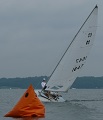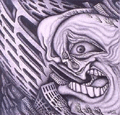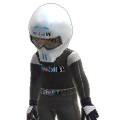I'm looking to strengthen, and help hold the curvature I want in my hood and engine cover. I know a number of folks have done this with various things that they then over-laminate into place with fiberglass cloth. I think so far I have seen balsa (similar to the old 914-6), PVC, and aluminum.
I'm thinking about using carbon fiber. A fairly inexpensive option would be to use solid carbon fiber rod. It's available in many diameters and not too expensive (~$25 for a 3/8" diameter, 4' long piece). The only problem for me is that, without several diameters of carbon fiber rods on-hand, it is difficult for me to determine which diameter I should go with. It would obviously need to be flexible enough to conform to the slight bowed shape I would need, yet stiff enough to provide rigidity once glued in place.
Right now I'm guessing that 3/8" or 1/2" diameter solid rod would be what I'm after, but thought I'd pose this question to everyone else to get input. Maybe there are some die-hard composite gurus on here?
- Home
- Latest Posts!
- Forums
- Blogs
- Vendors
- Forms
-
Links

- Welcomes and Introductions
- Roadster
- Type 65 Coupe
- 33 Hot Rod
- GTM Supercar
- 818
- Challenge Series
- 289 USRCC
- Coyote R&D
- Ask a Factory Five Tech
- Tech Updates
- General Discussions
- Off Topic Discussions
- Eastern Region
- Central Region
- Mountain Region
- Pacific Region
- Canadian Discussions
- Want to buy
- For Sale
- Pay it forward
-
Gallery

- Wiki-Build-Tech


 Thanks:
Thanks:  Likes:
Likes: 


 Reply With Quote
Reply With Quote



 We need to make a cradle fit from the top that matches the desired profile, supports the curve that we want. Right now my hinges, locking pins and center support force it to fit and curve in 3 dimensions, release the pins and the correct curves are lost
We need to make a cradle fit from the top that matches the desired profile, supports the curve that we want. Right now my hinges, locking pins and center support force it to fit and curve in 3 dimensions, release the pins and the correct curves are lost




